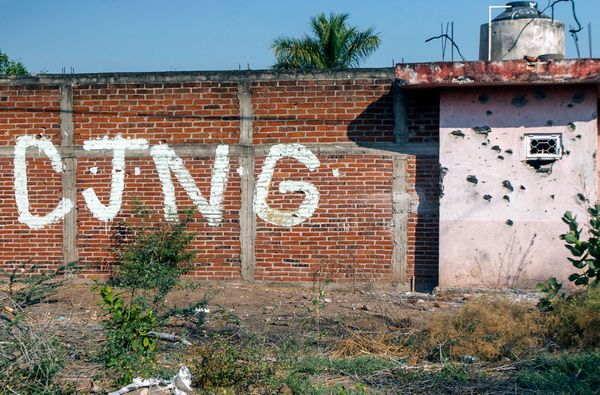
In April 2020, while Covid-19 spread around the country, and millions of people were sheltering at home, Shay Meyers, the CEO of Owyhee Produce, one of the largest onion growers in the US, asked his workers to bury thousands of pounds of onions.
The restaurants, school dining halls, and event centers that normally bought his onions were all shuttered. His cold storage was full. Even though the demand for onions in American kitchens remained as high as – or even higher than – before the pandemic, there simply wasn’t a way to get the food into the hands of those who needed it. In April alone, Owyhee Produce buried four million onions.
“I was extremely worried about going out of business,” Myers said.
Long before most of the emergency rooms were overloaded, it was the food system that showed the first signs of the enormous impact the pandemic would have. Empty shelves at the supermarket. Closed restaurants. Farmers dumping milk out into their fields or euthanizing animals as meat processing plants became overwhelmed or shut down.

And it wasn’t just farmers or the restaurant owners or the agricultural industry that suffered: hunger spiked across the country. Food insecurity in the US increased from 11% to 15% during the pandemic, with at least 60 million Americans visiting a food bank during 2020, an increase of 50% from the year before.
“The pandemic shifted everyone’s understanding of food as something we buy and sell,” said Michael Fakhri, UN special rapporteur on the right to food. People are finally realizing that food is more than just a commodity, he said. “Food is how we take care of each other, and most importantly, it’s how we take care of the land and water.”
Covid’s upturning of the US food system gave those in the industry a preview of a future where pandemics, global conflict and extreme weather events exacerbated by the climate crisis will wreak havoc on our ability to provide food reliably and equitably (the latest IPCC report on the climate crisis warns about exactly this).
Fast forward two years and many of the bottlenecks have been resolved. Restaurants are opening back up. Schools are full. Supermarket shelves are stocked. But as the food system begins to return to normal, voices throughout the industry are pushing for change.
Monopolies, bottlenecks – and new approaches
“The biggest problem is power – and power being concentrated in the hands of a few.” said Fakhri.
A Guardian analysis found nearly 80% of dozens of everyday grocery items are supplied by just a handful of companies. Only four firms control half the market in chicken processing, almost 70% of pork and more than 80% of beef, while four biotech seed companies control half the world’s seed supply.
Consolidation of power plays out even when looking at food insecurity, said Andy Fisher, the author of Big Hunger. Food banks and food stamps programs “are all tied into corporations”, he said, adding that the vast majority of food stamps goes to superstores and supermarkets, such as Walmart, Target, and Costco.

“Food banks are the same thing,” Fisher said. “You see huge ties between food banks and industrial agriculture, whether it’s board members, volunteers, cash, or food donations. It’s all about propping up our agricultural markets.”
The pandemic laid bare the problems with consolidation. Four large conglomerates control approximately 55-85% of the market for pork, beef, and poultry, according to an analysis cited by the White House as part of its recent efforts to boost competitiveness, particularly in meat processing. When just a few of slaughterhouse shut down due to Covid outbreaks, it left farmers with no way of getting their livestock processed and ready for distribution.
For Liz and Nate Brownlee of Nightfall Farms, the shortage of meat processors is not a new challenge. The Brownlees raise pigs, chickens and lambs and sell their meat locally in southern Indiana. “Back in 2018, farmers [in Indiana] were saying, ‘There’s not enough butcher shops, this is a bottleneck,’” said Liz Brownlee.
This already tenuous situation became worse during the pandemic. When big meat suppliers such as Tyson and Perdue had to shut down their processing plants due to Covid outbreaks and grocery stores ran out of meat, demand for local products exploded. Farmers started raising more livestock, worsening the bottleneck. “All of a sudden, the butcher shops that we normally work with went from scheduling out three months to scheduling out a year,” Liz Brownlee said.

For the Brownlees, this meant ending up with a product that’s harder to sell. “If the pigs grew slow because it was really cold, we get less meat back so we have smaller pork chops to sell. And the same thing is true on the other side. If they’re growing too fast, it’s just as hard to sell pork chops the size of dinner plates.”
Two years after the pandemic began, small farmers in the US face the same mountain of challenges as before: high land costs, a system that favors corporate players, distribution built for scale and a labor supply at the mercy of changing immigration policy. They all just intensified.
Until policies and systems adapt to support them, small farmers are left to their own devices to overcome systemic barriers. The Brownlees, who currently work part-time outside the farm to supplement their income, are hopeful they can find creative ways to turn their farm into a sustainable business.

In 2017, they looked into starting their own small butcher shop. They ultimately decided not to move forward but shared their analysis with another local farm, which is opening the shop themselves.
Another solution the Brownlees have discovered is running their own CSA (community supported agriculture), selling chicken, pork, lamb and eggs directly to customers through monthly membership boxes. “That reliability during the start of Covid was incredibly important to us. Our members stayed with us the entire time and we actually picked up more,” said Nate Brownlee.
One of the things that makes our food system fragile, Fakhri said, is the lack of redundancy. When supermarkets run out of a type of food, there’s nowhere else for most people to get it from. “We have this mentality coming out of the ’80s and ’90s of ‘just in time’ delivery and of things being extremely streamlined. Things not sitting in warehouses, no storage, no backup,” Fakhri said. “Treating the supply of food by using the same model they use for the production of cars is part of the problem.”
Solutions such as CSAs are the kind of redundancies that will help our food system prepare for the future, Fakhri said. “We need to create multiple supply chains.”
Going local can create resilience
Mandela Grocers, a small employee-owned cooperative grocery store in Oakland, California, was prepared for the particular problems of the pandemic. It gets its produce and meat from local producers.
“We didn’t face those [supply chain] challenges because our supply chain is a lot shorter. There aren’t a lot of hands between our producers and our customers,” said Adrionna Fike, who works at the grocery store and like all seven workers, is a co-owner.
“You won’t see Tyson meat here. We only sell one brand of chicken, that’s Mary’s chicken, because we trust Mary,” said Fike. The only things the store ran out of were gloves and paper bags, neither of which it sourced locally.
Mandela offers steep discounts for people on food stamp programs or those who live in low income housing. Its workers earn $18 to $24 an hour, have benefits and participate in a profit-sharing model.
It’s a stark contrast to some of the bigger grocery chains which have made huge profits during the pandemic, while their workers struggle. A recent report found that more than 75% of Kroger’s employees experience food insecurity.
“At the height of the pandemic, we were having the biggest profits of our lives,” Fike said but Mandela’s took precautions to prevent burnout, including deciding against extending working hours to meet demand and closing on Sundays to give people an extra day of rest. Those decisions paid off – the store made it through the pandemic without a Covid outbreak or having to close due to staffing shortages. They raised wages in 2021 and employees earned the same even with closing on Sundays. Fike says that even if the wages aren’t grossly more than a chain grocery, their total compensation package is unmatchable by a chain grocery store. “No chain grocery store can do what we do.”
Creating resilience in the face of global upheaval means focusing on the wider system, not just one aspect, said Fakhri. “You can have a shorter supply chain that will then reproduce the same problem of power and [lack of] accountability.”

He believes the answer lies in transparency and accountability: knowing who is producing food and under what conditions, using government subsidies to support better farming and ensuring legal repercussions for worker exploitation, animal mistreatment and environmentally-harmful farm practices.
As much as changes within the industry have an impact, experts warn that the most significant changes needed are policy changes.
More robust anti-trust laws, something the Biden administration has indicated interest in, would be one of the most powerful ways to hold businesses accountable and limit the power being concentrated in just a few hands, Fakhri said. “Make markets work for people as opposed to the other way around. Right now, we’re all at the mercy of the markets.”
When it comes to solving food insecurity, Fisher said that we need to stop looking at food banks and free food as solutions, and instead look at things like universal basic income, higher minimum wages, affordable housing, universal health care, and affordable childcare. “What we’ve developed is a system where we won’t give you money, but we’ll give you food, which has its roots in agricultural support programs.”
“The Covid-19 pandemic has highlighted what we have known for decades,” Fakhri wrote last year, “hunger, malnutrition and famine are not caused by inadequate amounts of food. They are caused by the political failures that restrict people’s access to adequate food.”







